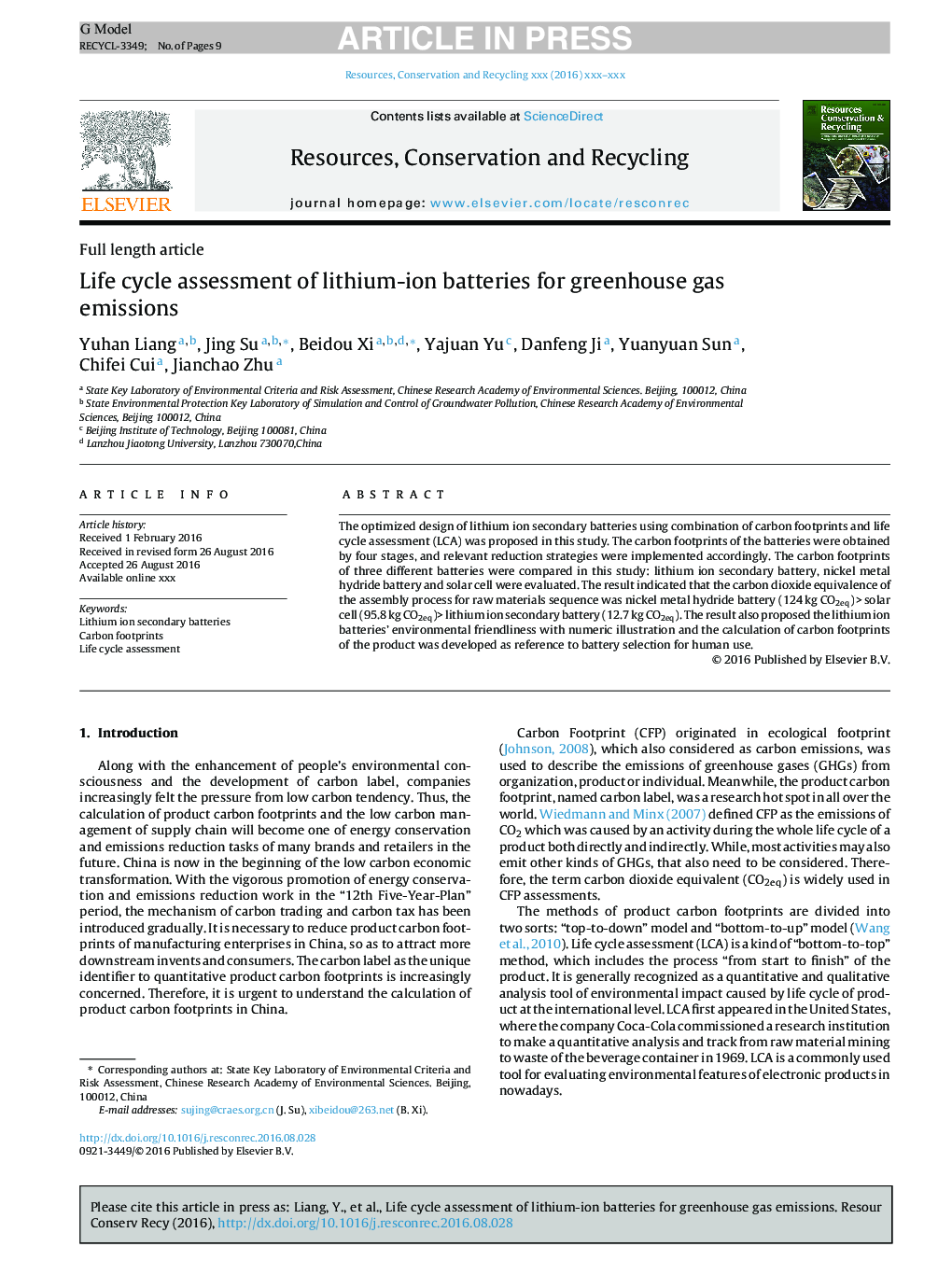| Article ID | Journal | Published Year | Pages | File Type |
|---|---|---|---|---|
| 5118909 | Resources, Conservation and Recycling | 2017 | 9 Pages |
Abstract
The optimized design of lithium ion secondary batteries using combination of carbon footprints and life cycle assessment (LCA) was proposed in this study. The carbon footprints of the batteries were obtained by four stages, and relevant reduction strategies were implemented accordingly. The carbon footprints of three different batteries were compared in this study: lithium ion secondary battery, nickel metal hydride battery and solar cell were evaluated. The result indicated that the carbon dioxide equivalence of the assembly process for raw materials sequence was nickel metal hydride battery (124Â kg CO2eq)Â >Â solar cell (95.8Â kg CO2eq)>Â lithium ion secondary battery (12.7Â kg CO2eq). The result also proposed the lithium ion batteries' environmental friendliness with numeric illustration and the calculation of carbon footprints of the product was developed as reference to battery selection for human use.
Related Topics
Physical Sciences and Engineering
Energy
Renewable Energy, Sustainability and the Environment
Authors
Yuhan Liang, Jing Su, Beidou Xi, Yajuan Yu, Danfeng Ji, Yuanyuan Sun, Chifei Cui, Jianchao Zhu,
